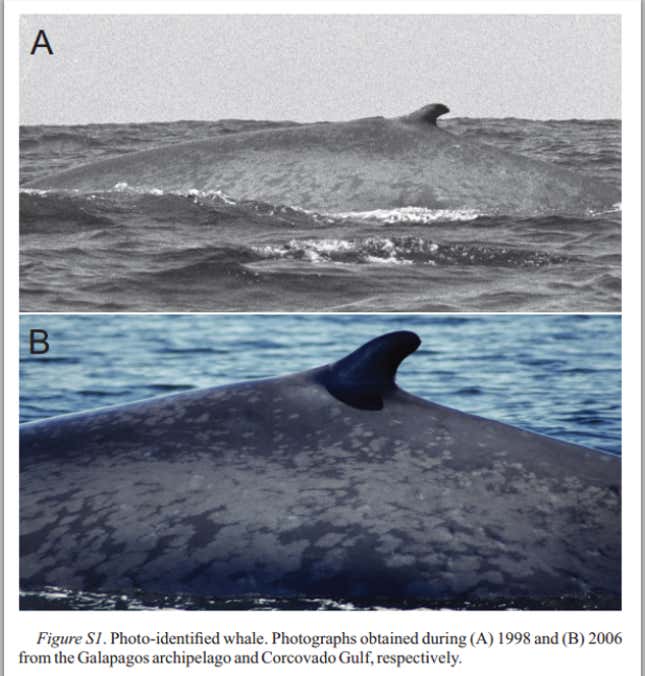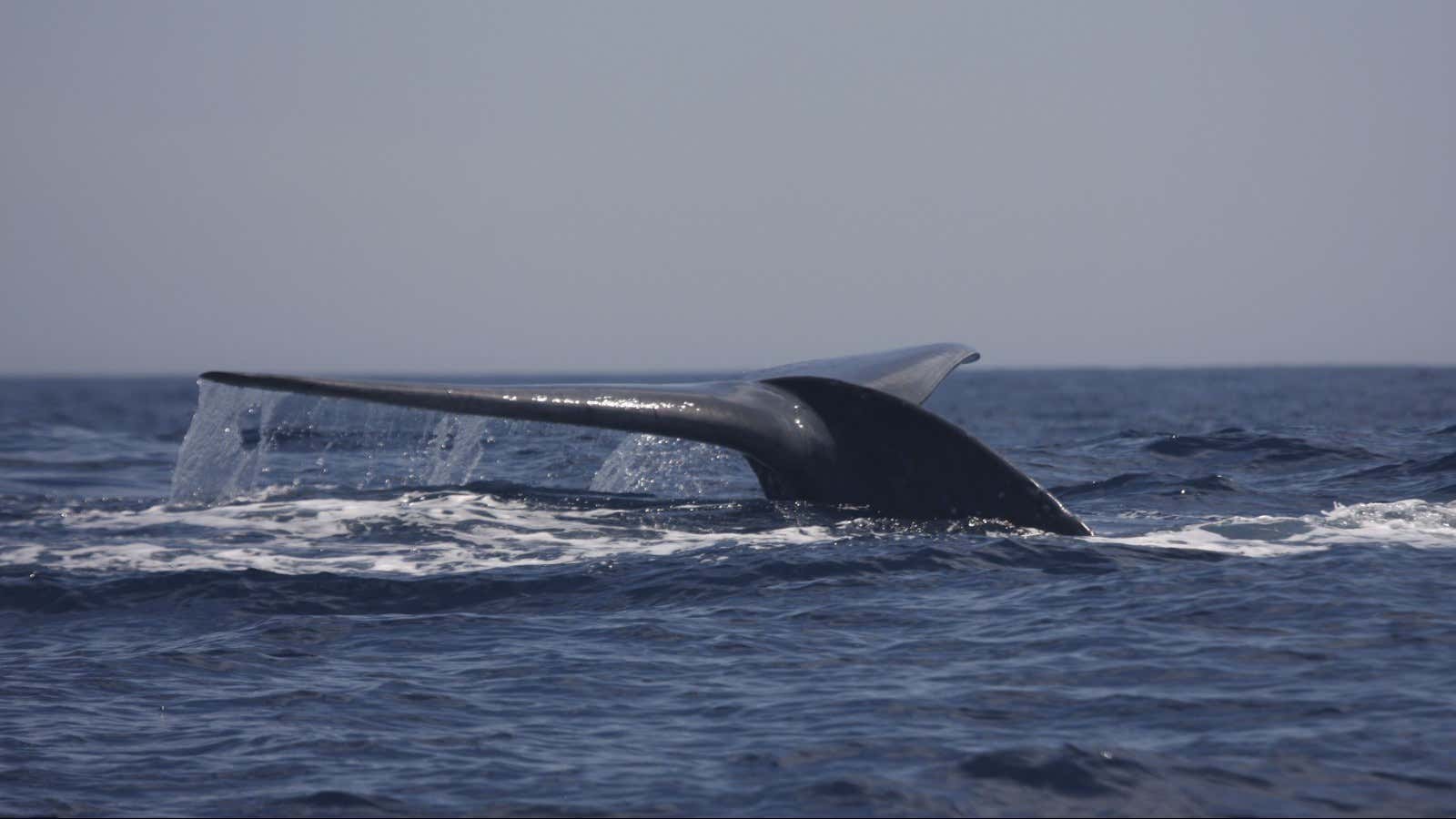There are not that many blue whales left on Earth—perhaps some 10,000, by one estimate—and scientists still know relatively little about them. Now, with help from Isabella, an eastern south Pacific blue whale, scientists are a big step closer to determining where many of these creatures go during their breeding season.
Isabella has traveled at least once from her home feeding grounds on the Chilean coast to the equatorial waters of the Galapagos. The researchers who documented her 3,100-mile (5,000 km) journey think this means the Galapagos might be where southern blue whales go to breed in the winter.
At the very least, this is the longest north-to-south migratory movement ever documented for a blue whale of Isabella’s type, a sub-species native to the eastern south Pacific. These whales roam and feed in Chile’s Gulf of Corcovado during summertime in the southern hemisphere.
Blue whales can be up to 100 feet long and are thought to be the largest animals that have ever existed. But being the largest animal in history doesn’t make a species the most-studied or best-understood. (The discovery of the Gulf of Corcovado as a major blue whale feeding ground was only made in 2004.) Hardly anything is known about where they spend their winters, although since the 1990s, based on genetic studies, acoustic studies, and recorded sightings of unidentified blue whales near Costa Rica and the Galapagos, some researchers have suspected that these whales travel from the eastern South Pacific to the eastern tropical Pacific during winters.

A study published this month in Marine Mammal Science provides the first substantial evidence of such a migration, courtesy of Isabella and the researchers tracking her. Scientists based in Chile and at the US National Oceanic and Atmospheric Administration (NOAA) examined multiple genetic and photographic records of whales observed in the eastern south Pacific and the eastern tropical Pacific, finding several records that matched—representing different sightings of the same whale.
It’s still not certain that eastern south Pacific blue whales breed up near the Galapagos. Rodrigo Hucke-Gaete, one of the marine biologists involved in the study, tells Quartz that to his knowledge, “no one’s actually yet seen copulation or the birth of a calf. Until that happens, we only have a link between the Chilean feeding ground and a potential [breeding ground]” or other migratory destination.




